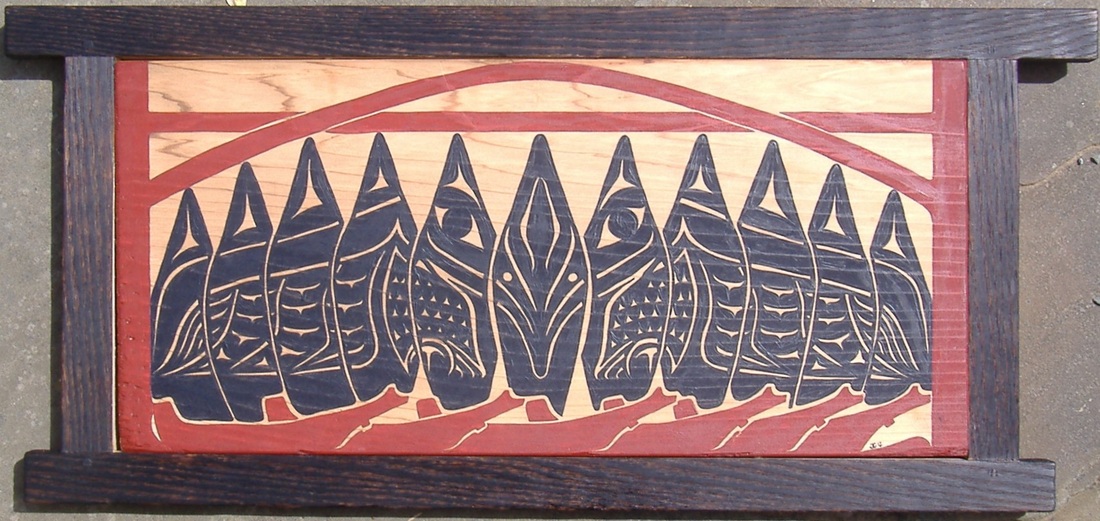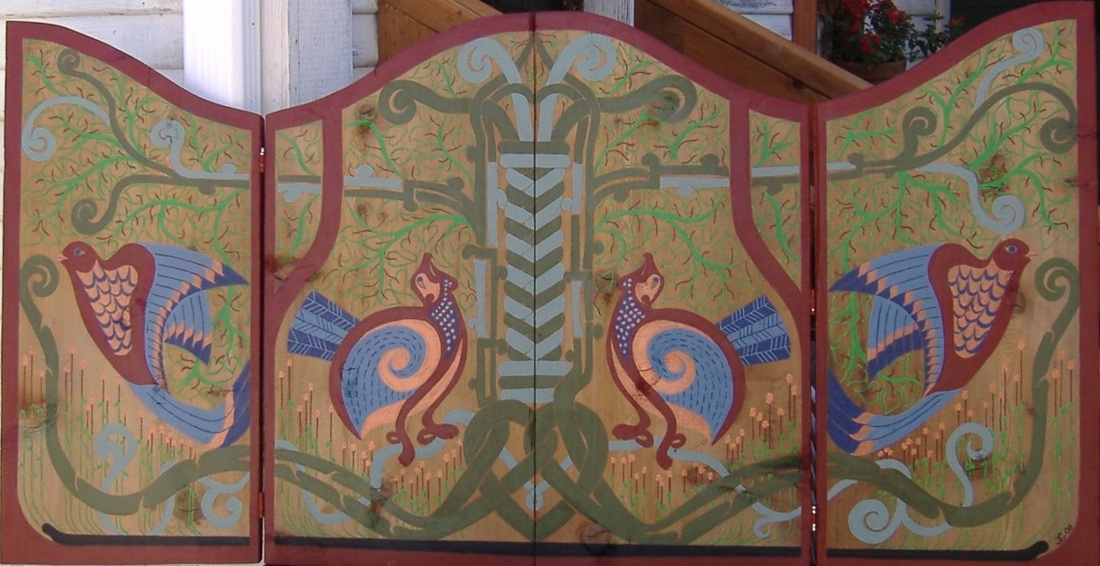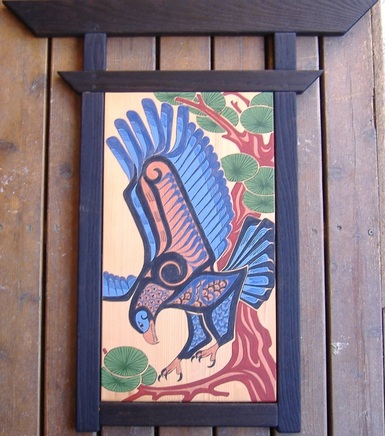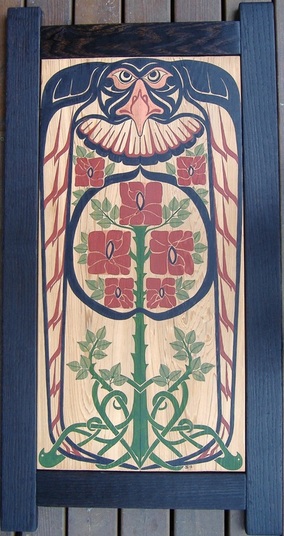5.1 The core and foundation of my personal style is based on my deep love and respect for Northwest Coast Native painting. It is a two-dimensional style, and I use it to form the overall structure for my designs. Like painters from the past, I choose to paint on wood, preferably western red cedar (Thuja plicata). I use acrylics as my paint of choice and most often pull the brush towards me, as would a carver using a knife. I typically paint in the order of primary-secondary-tertiary/background design elements. Primary formlines are usually painted first, and they are used to create the image I want to project. I employ design elements in reoccurring fashion and rely on cardboard templates to insure design uniformity. I use tracing paper to maintain bilateral symmetry when it is an important part of a particular composition. For some of my designs, I have used negative space to delineate the structure, following Bill Holm’s “donut-and-hole” analogy and often seen in older art objects. Northwest Coast material culture has also motivated me to create screens and boxes as objects for my painting. Finally the spiritual aspect of my art owes as much to Northwest Coast Native culture as it does to my own Italian heritage.
[My personal contact with Northwest Coast Native cultures directly comes from working at the Fishtown, Ozette, and Indian Island archaeological projects in the 1970’s and especially from teaching on the Makah Reservation from 1980 till 2003.]
[My personal contact with Celtic culture comes directly from seven trips to Scotland starting in 1993 and continuing with visits to our children who currently live in Carnoustie, Angus. Indirectly, I have been introduced to Scottish culture through the historical novels of Nigel Tranter, to my daily visit to the BBC Scotland website, and to my passion for Scottish trad music.]
[My only direct personal contact with Japanese culture has come from several friends from Seattle. But for as long as I can remember, I have loved Japanese woodblock prints. I also am a big fan of the films of Akira Kurosawa, the animation of Hayao Miyazaki, and the acting of Toshiro Mifune. Most recently, we have been watching Korean TV and watch two to three hours nightly, especially enjoying romantic comedies and historical dramas.]
[The purchase of a British arts and crafts armoire, a Jugendstil sideboard, and several other pieces of period craftsman furniture led me to research the Arts & Crafts Movement. My interest was also enhanced by the education of my daughter Jessie and son-in-law Adam at the Glasgow School of Art. This led to an appreciation of the works of Charles Rennie Mackintosh and Margaret Macdonald Mackintosh, as well as to many other designers who created the Glasgow Style.]




 RSS Feed
RSS Feed